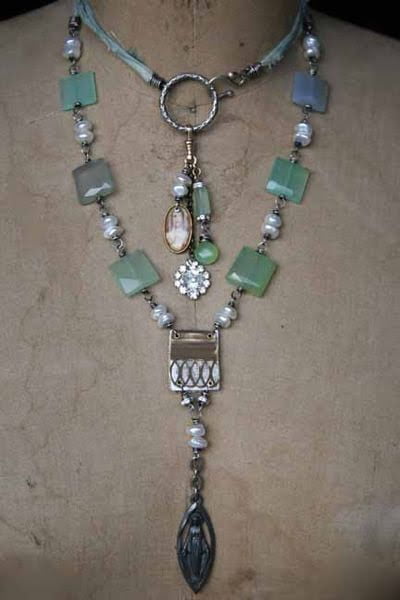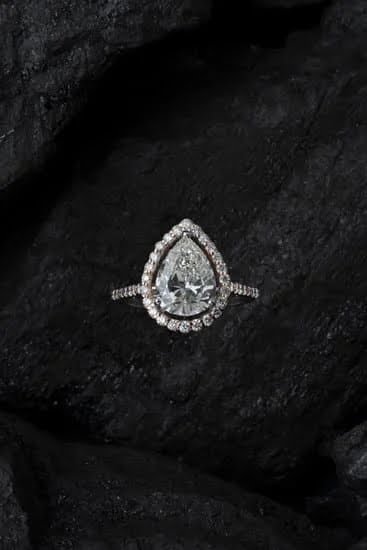The history of charms jewelry is as fascinating as it is diverse, with a rich heritage that spans centuries and cultures. From ancient amulets to modern-day trinkets, charms jewelry has played a significant role in human adornment and symbolism. In this article, we will take a deep dive into the origins, evolution, cultural significance, materials and techniques, famous examples throughout history, superstitions and beliefs, contemporary design trends, and enduring legacy of charms jewelry.
Throughout history, charms jewelry has been used for various purposes such as protection, luck, religious devotion, and personal expression. The practice of wearing charms dates back to ancient civilizations like the Egyptians, Greeks, and Romans who adorned themselves with amulets and talismans for their believed magical or protective properties.
Over time, charms jewelry has evolved in both style and meaning. From the intricate designs of medieval Europe to the symbolic motifs of Victorian times to the mass-produced trinkets of today, the art of crafting charms has adapted to changing fashion trends and cultural influences. Not only have materials and techniques advanced, but so too have the societal views on what constitutes a charm.
As we explore this captivating world of ornamentation and symbolism throughout different societies and time periods, it becomes clear that charms jewelry holds a timeless appeal that continues to captivate individuals across the globe. It speaks to our innate desire for self-expression and connection to something greater than ourselves – an enduring legacy that reinforces its place in the world of adornment.
The Origins of Charms Jewelry
Charms jewelry has a rich and fascinating history that dates back thousands of years. The practice of wearing charms as jewelry can be traced to ancient civilizations, where these small ornaments were believed to possess mystical properties and provide protection to the wearer. In this section, we will delve into the origins of charms jewelry and explore its significance in different cultures throughout history.
Ancient Mesopotamia and Egypt
One of the earliest known instances of charms jewelry can be found in ancient Mesopotamia and Egypt. These civilizations adorned themselves with small amulets and talismans made from materials such as precious stones, metals, and even animal parts. These charms were often inscribed with symbols or figures representing deities or other supernatural beings, and were worn to ward off evil spirits or bring good fortune.
Greek and Roman Times
During the classical era, charms jewelry continued to hold significant cultural importance. In ancient Greece and Rome, amulets were commonly worn as pendants or incorporated into bracelets and necklaces. These items were believed to offer protection in battle, ensure fertility, or convey messages of love. The use of symbols such as the evil eye, horseshoes, or keys became prevalent during this time, laying the foundation for enduring superstitions associated with charms jewelry.
Medieval Europe
In medieval Europe, charms jewelry took on religious connotations as Christianity spread throughout the continent. Christians wore amulets known as “saint medallions” or “relics” that were believed to carry the blessings or powers of revered saints. These items held deep spiritual meaning for individuals seeking divine intervention or protection from harm. As such, they became an integral part of medieval fashion and served as a symbol of faith for many people.
The history of charms jewelry is diverse and deeply intertwined with human beliefs and cultural practices across time periods and geographical regions. From ancient Mesopotamia all the way through medieval Europe, the tradition of wearing charms has left an indelible mark on humanity’s collective heritage and continues to captivate people today.
Evolution of Charms Jewelry
The history of charms jewelry dates back thousands of years, with evidence of its existence in ancient civilizations such as the Egyptians, Romans, and Greeks. In these early societies, charms were worn not only for adornment but also for their perceived protective and mystical properties. In fact, Egyptian tombs have been discovered containing jewelry adorned with amulets and charms, highlighting their significance in the afterlife and belief in their magical powers.
As time progressed, the evolution of charms jewelry continued through various historical periods. During the Middle Ages, charms were often worn as religious symbols or talismans to ward off evil spirits and bring good fortune. The Renaissance period saw an increase in the popularity of charm bracelets among European royalty, adorned with precious gemstones and intricate designs as a symbol of wealth and status.
The Industrial Revolution marked a shift in the production of charms jewelry, as advancements in manufacturing allowed for mass production of charms using materials such as silver and gold. This led to a wider accessibility of charms jewelry among different social classes. Today, the tradition of wearing charms jewelry has evolved into a modern fashion statement, with many individuals expressing their personal style through custom charm bracelets and necklaces.
| Historical Period | Key Developments |
|---|---|
| Ancient Civilizations (Egyptians, Romans, Greeks) | Charms worn for protection and mystical beliefs |
| Middle Ages | Religious symbols and talismans for warding off evil |
| Renaissance | Increase in popularity among European royalty; ornate designs |
| Industrial Revolution | Mass production using silver and gold; wider accessibility |
Cultural Significance of Charms Jewelry Across Different Societies
Charms jewelry has been worn and cherished by people from different cultures and societies throughout history. The cultural significance of charms jewelry transcends geographical boundaries and reflects the beliefs, values, and traditions of various societies. From ancient civilizations to modern times, charms have held a special place in the hearts of individuals and communities around the world.
In ancient Egypt, charms were believed to offer protection and bring good luck to the wearer. Amulets in the form of animal figures or symbols were commonly used as charms, along with other pieces of jewelry adorned with precious stones or metals. Similarly, in China, traditional Chinese charms known as “fu” were worn as a symbol of prosperity, happiness, and good fortune. These intricate pieces often featured auspicious symbols such as dragons or phoenixes.
In European folklore, charms jewelry held a significant role in superstitions and beliefs. Charms were thought to ward off evil spirits, provide spiritual protection, and bring good health. Additionally, during the Victorian era in England, charm bracelets became popular as sentimental keepsakes adorned with meaningful symbols or mementos. The cultural significance of charms jewelry across different societies is a testament to its enduring appeal and timeless relevance in human history.
Throughout history, charms jewelry has served as a reflection of cultural identities and societal values. From providing protection and good luck to symbolizing personal beliefs or traditions, charms have remained an integral part of various cultures worldwide. The diverse cultural significance attached to charms jewelry illustrates its universal appeal and the profound impact it has had on human societies throughout the ages.
Materials and Techniques Used in Crafting Charms Jewelry
The history of charms jewelry is rich and diverse, with a wide array of materials and techniques used in its crafting. Throughout the centuries, different cultures have utilized various materials such as precious metals, gemstones, glass beads, and even organic materials like shells and bones to create charming adornments.
In ancient times, artisans often employed intricate metalworking techniques such as filigree and granulation to fashion delicate and detailed charms. Fast forward to the modern era, contemporary jewelers continue to explore innovative methods like 3D printing and laser cutting to produce unique and personalized charm jewelry pieces.
One fascinating aspect of the materials used in crafting charms jewelry is that they often hold symbolic significance. For example, in ancient Egypt, certain stones like lapis lazuli were believed to possess protective qualities when worn as charms. In Chinese culture, jade has been revered for thousands of years for its association with good fortune and prosperity.
Furthermore, the techniques employed in creating charms jewelry also reflect the cultural heritage of different societies. For instance, the intricate knotting technique used in Chinese knot charms not only serves an ornamental purpose but also carries symbolic meanings related to longevity and unity.
In addition to these traditional methods, contemporary jewelers are also incorporating new sustainable materials into their craft. With a growing focus on ethical sourcing and environmental consciousness, it is becoming increasingly common to find charms jewelry made from recycled metals or eco-friendly alternatives such as biodegradable resin. As charm jewelry continues to evolve alongside societal values and technological advancements, it remains a testament to human creativity and craftsmanship throughout history.
| Materials | Techniques |
|---|---|
| Precious Metals | Filigree |
| Gemstones | Granulation |
| Glass Beads | 3D Printing |
| Jade | Laser Cutting |
| Lapis Lazuli | Knotting Technique |
Famous Charms Jewelry Throughout History
Charms jewelry has been an integral part of human culture for centuries, with a rich and fascinating history that dates back to ancient times. From amulets and talismans to symbolic pendants, the use of charms in jewelry has evolved and transcended different cultures around the world. Let’s take a closer look at some famous charms jewelry throughout history:
- The Eye of Horus: In ancient Egypt, the Eye of Horus was a powerful symbol of protection and good health. This iconic charm was commonly worn as an amulet or engraved on jewelry to ward off evil spirits and bring blessings to the wearer.
- Celtic Knot Charms: The intricate designs of Celtic knot charms have been revered for their symbolism and meaning in Celtic culture. These charms often represented eternal love, loyalty, and interconnectedness, making them highly sought after in ancient Celtic societies.
- Lucky Charms in Ancient Greece: The ancient Greeks believed in the power of lucky charms such as the scarab beetle, which symbolized rebirth and regeneration. These charms were worn as jewelry or carried for protection and good fortune.
The history of charms jewelry is replete with examples of how these symbolic adornments held deep cultural significance across various civilizations. Whether used for protection, luck, or spiritual beliefs, charms have always played a significant role in personal adornment and self-expression.
From ancient civilizations to modern fashion trends, the enduring legacy of charms jewelry continues to captivate people around the world. As we explore the origins and cultural significance of these timeless pieces, it becomes evident that their allure transcends time and place.
The Role of Charms Jewelry in Superstitions and Beliefs
Charms jewelry has always played a significant role in superstitions and beliefs throughout history. The concept of using charms to ward off evil spirits, bring good luck, or protect against harm can be traced back to ancient civilizations.
One of the earliest known examples of charms jewelry can be found in ancient Egypt, where amulets and talismans were worn for protection and as symbols of power and status. These beliefs were also present in other cultures such as the Greeks, Romans, and Celts, each with their own unique interpretations of the power of charms.
In medieval Europe, charms jewelry was often associated with folklore and superstitions. Certain symbols or objects were believed to possess magical properties and were worn as a form of protection or to bring good fortune. For example, horseshoe-shaped charms were commonly used to ward off evil spirits, while four-leaf clover charms were thought to bring luck to those who carried them.
The belief in the power of charms jewelry continues to be present in various cultures around the world today. In many Asian countries, for example, jade charms are highly valued for their protective properties and are often passed down through generations as family heirlooms.
Additionally, some individuals still believe that wearing certain types of charms can provide them with health benefits or bring positive energy into their lives. The history of charms jewelry is deeply rooted in these superstitions and beliefs, demonstrating its enduring significance across different societies throughout time.
Contemporary Charms Jewelry
In the world of fashion and accessories, charms jewelry continues to hold a special place. While traditional charm bracelets and necklaces have been cherished for many years, contemporary designs have breathed new life into this classic accessory. Today, charms jewelry encompasses a wide range of styles, from minimalist and modern to bold and eclectic.
Design Trends
One of the current design trends in charms jewelry is the use of mixed metals. Combining gold, silver, and rose gold charms on a single bracelet or necklace adds a modern twist to this timeless accessory. Additionally, asymmetrical arrangements of charms are gaining popularity, allowing wearers to create unique and personalized pieces that reflect their individuality.
Popular Styles
From delicate chains with dainty charms to chunky link bracelets adorned with larger statement pieces, there is a wide variety of popular styles within contemporary charms jewelry. Layering multiple charm bracelets or necklaces has become a prominent trend, offering wearers the opportunity to showcase multiple charms at once while creating visually dynamic looks.
With its ability to adapt to changing fashion trends while retaining its sentimental value, contemporary charms jewelry continues to be sought after by individuals looking for versatile accessories that can be personalized to suit their style preferences.
Conclusion
In conclusion, the history of charms jewelry has shown its enduring legacy and timeless appeal across different cultures and time periods. From its origins in ancient civilizations to its evolution into modern design trends, charms jewelry continues to hold cultural significance and personal meaning for many people around the world.
The use of various materials and techniques in crafting charms jewelry has allowed for creativity and diversity in designs, reflecting the unique traditions and styles of different societies. As a result, famous charms jewelry pieces throughout history have become not only symbols of fashion but also representations of cultural identity and beliefs.
Furthermore, the role of charms jewelry in superstitions and beliefs has added a layer of mystique and fascination to these adornments. Whether as symbols of protection, good luck, or love, charms hold a special place in the hearts of those who wear them.
In contemporary times, charms jewelry remains popular among individuals seeking personalized accessories that reflect their individuality and interests. With an array of design trends and styles available, it is evident that the allure of charms jewelry will continue to captivate people for generations to come. The enduring legacy of charms jewelry speaks to its ability to transcend time and remain a cherished form of self-expression.
Frequently Asked Questions
Where Did Charms Come From?
Charms have been used for centuries, with their origins traced back to ancient cultures such as the Egyptians, where they were worn to ward off evil spirits. In medieval times, charms were also worn for protection and good luck.
What Is the Tradition of Charm Bracelets?
The tradition of charm bracelets dates back thousands of years, with evidence of them being worn in ancient civilizations. Throughout history, charm bracelets have been used to symbolize important events, beliefs, and personal experiences, making them a deeply personal and meaningful piece of jewelry.
Are Charm Bracelets a Southern Thing?
While charm bracelets are not exclusive to the South, they do hold a significant place in Southern culture. In the Southern United States, charm bracelets are often passed down through generations as family heirlooms, with each charm telling a story or representing a milestone in the wearer’s life.
This tradition has contributed to the association of charm bracelets with Southern culture.

Welcome to my jewelry blog! My name is Sarah and I am the owner of this blog.
I love making jewelry and sharing my creations with others.
So whether you’re someone who loves wearing jewelry yourself or simply enjoys learning about it, be sure to check out my blog for insightful posts on everything related to this exciting topic!





